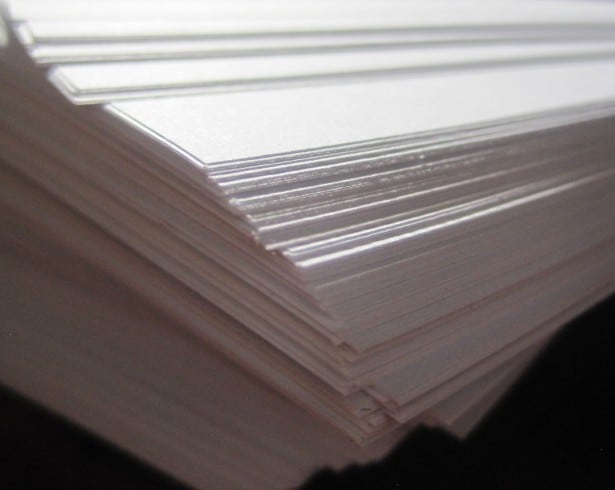Paper weight can be a confusing concept for some people to grasp. If you are a print customer, you have probably heard the terms “Points” or “Pounds” in reference to the thickness of the paper types you have to choose from. For example, a 16 point gloss cover stock, or 20-pound bond. What exactly does this mean, though? How is this measured?
Before we start, this post will only be discussing the measurements of paper thickness, we will get into the types of paper in a future article. We do not want to overwhelm you with information!
Paper Weight Explained:
There are two main types of measurement for paper stock. “Pounds” and “Points”. You may see it abbreviated as “#” or “lb” for pounds and “pt” for points.
Pounds
Pounds, as you might have guessed, refers to the weight of the paper. It is normally measured by how much 500 sheets (or a ream) of paper weighs in its basic unit uncut size, which means before being cut to Letter size or Legal size, the paper is weighed and categorized. The thicker the stock, the higher the weight. Weights range from 20 to 80 pounds for bond paper and 50 to 140 pounds for card stock.
Points
Points are used to indicate the thickness of each sheet of paper. Points are measured simply by using calipers to measure the thickness. Each point represents 1/1000th of an inch. Some examples of common point sizes, and how they might be written are as follows: 8 pt, 10 pt, 12 pt, 14 pt, and 16 pt paper. The higher the point value, the thicker the paper.
Finally, a more advanced calculation for paper weight that you might come across would be the paper’s GSM, which stands for ‘Grams per Square Meter’. GSM is a more internationally accepted measurement of paper weight, using the metric system rather than pounds. It refers to the actual substance weight of paper, irrespective of sheet size. For more information about GSM, follow this link.
We hope that this article has given you a better understanding of paper measurements so that you are better prepared and know what you want when having something printed.
Do you still have questions? We have the answers! Visit our new Resources page to download templates and watch video tutorials.


